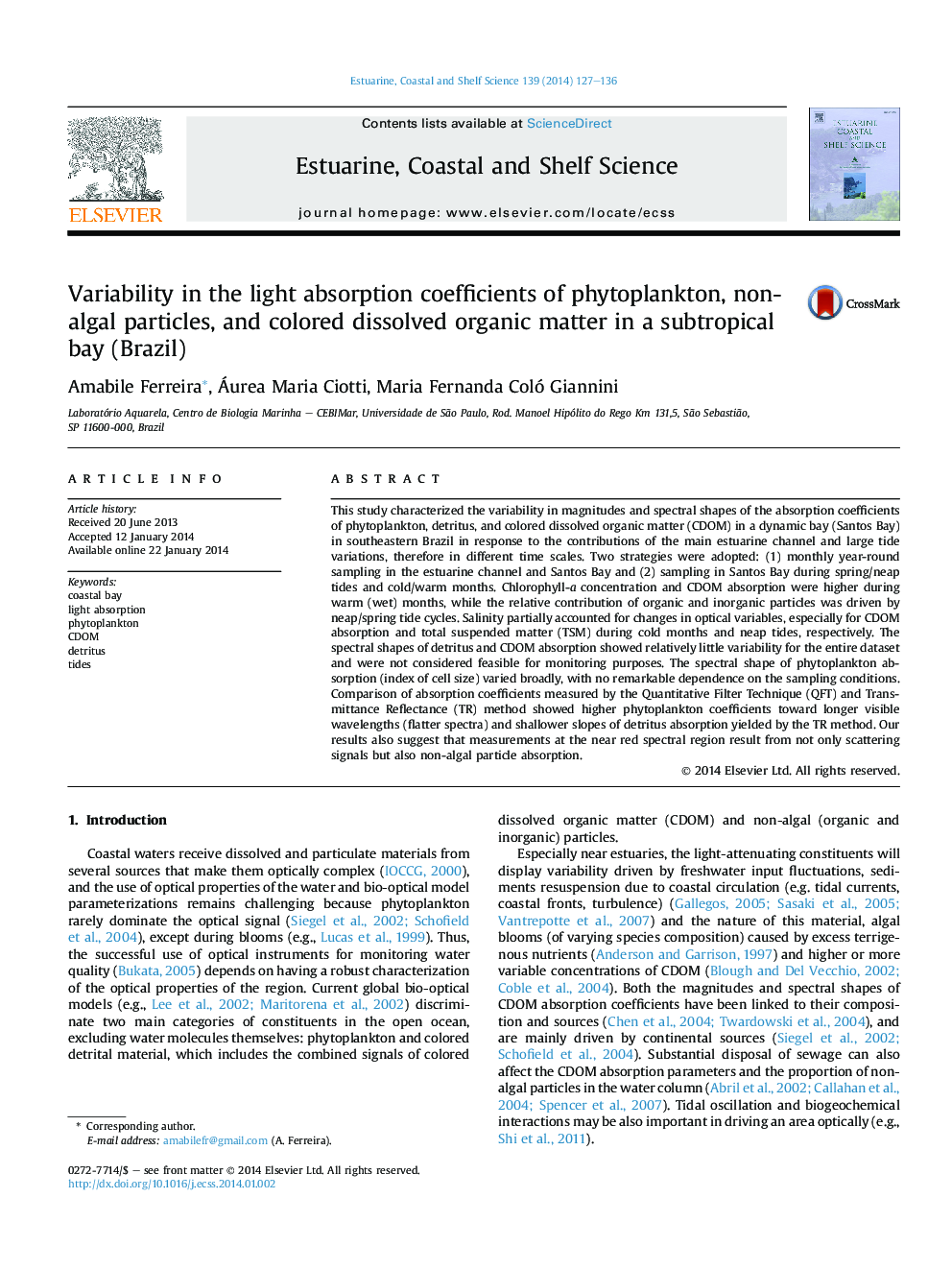| Article ID | Journal | Published Year | Pages | File Type |
|---|---|---|---|---|
| 6384977 | Estuarine, Coastal and Shelf Science | 2014 | 10 Pages |
This study characterized the variability in magnitudes and spectral shapes of the absorption coefficients of phytoplankton, detritus, and colored dissolved organic matter (CDOM) in a dynamic bay (Santos Bay) in southeastern Brazil in response to the contributions of the main estuarine channel and large tide variations, therefore in different time scales. Two strategies were adopted: (1) monthly year-round sampling in the estuarine channel and Santos Bay and (2) sampling in Santos Bay during spring/neap tides and cold/warm months. Chlorophyll-a concentration and CDOM absorption were higher during warm (wet) months, while the relative contribution of organic and inorganic particles was driven by neap/spring tide cycles. Salinity partially accounted for changes in optical variables, especially for CDOM absorption and total suspended matter (TSM) during cold months and neap tides, respectively. The spectral shapes of detritus and CDOM absorption showed relatively little variability for the entire dataset and were not considered feasible for monitoring purposes. The spectral shape of phytoplankton absorption (index of cell size) varied broadly, with no remarkable dependence on the sampling conditions. Comparison of absorption coefficients measured by the Quantitative Filter Technique (QFT) and Transmittance Reflectance (TR) method showed higher phytoplankton coefficients toward longer visible wavelengths (flatter spectra) and shallower slopes of detritus absorption yielded by the TR method. Our results also suggest that measurements at the near red spectral region result from not only scattering signals but also non-algal particle absorption.
